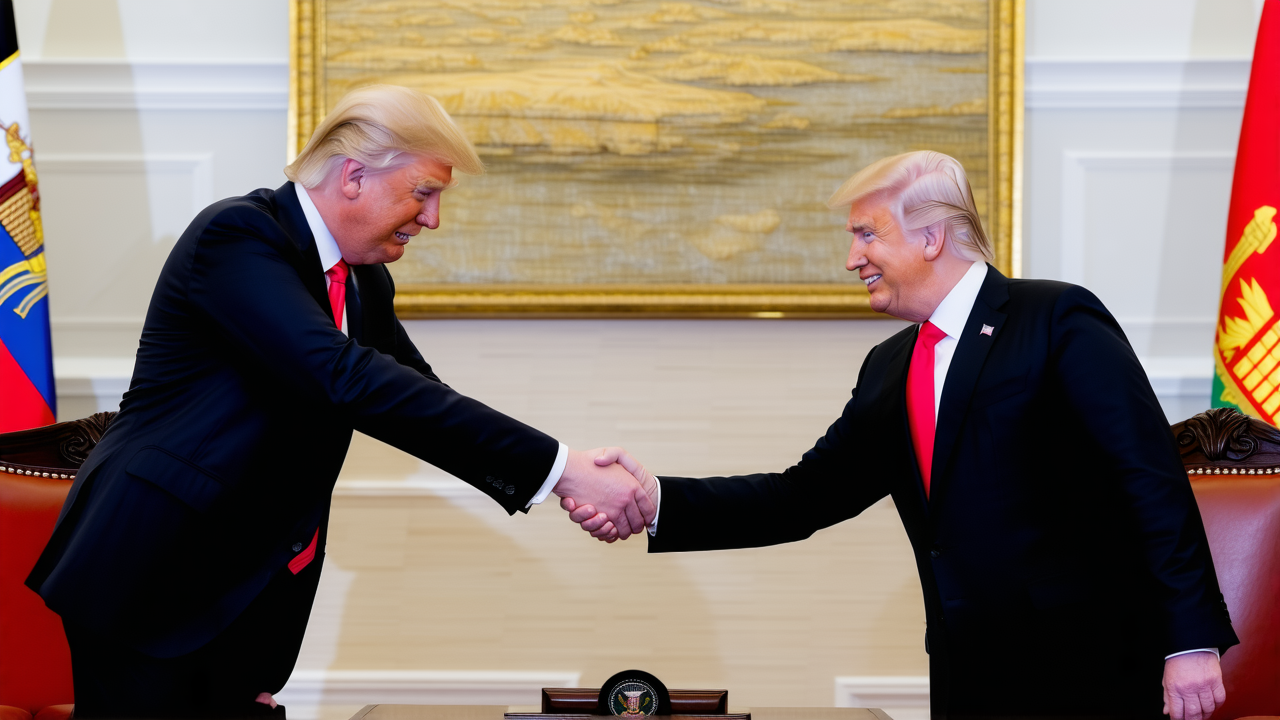Trump and Putin's Potential Meeting: A New Chapter in U.S.-Russia Relations?
Trump and Putin's Potential Meeting: A New Chapter in U.S.-Russia Relations?
As the world watches closely, the possibility of a face-to-face meeting between U.S. President Donald Trump and Russian President Vladimir Putin has surfaced once again. According to a recent report, senior White House officials confirmed that Trump may meet with Putin as early as next week, with the possibility of a subsequent trilateral meeting involving Ukraine’s President Volodymyr Zelenskyy being considered.
This potential meeting comes at a critical moment for the ongoing Ukraine-Russia conflict, as the U.S. approaches a deadline set by Trump on August 8 for Russia to demonstrate a willingness to negotiate peace. The outcome of the meeting could reshape the geopolitical landscape and influence the future of the war.
Signals of a Possible Meeting
On August 6, U.S. Special Envoy to the Middle East, Jason Greenblatt, met with Russian President Putin. Shortly thereafter, the White House released a statement calling the meeting “highly constructive” and “removing procedural obstacles” for a presidential-level dialogue.
Although Russia has not yet officially confirmed the meeting, Russian President Vladimir Putin’s press secretary, Dmitry Peskov, stated that “Russia is always open to peace negotiations”, a statement seen as a softening of Russia’s stance compared to its previous responses to U.S. sanctions and diplomatic pressure.
However, Ukraine’s position remains uncertain. While Ukrainian officials have not publicly commented on a possible trilateral meeting, private discussions suggest that Ukraine is wary of any talks that do not include equal conditions and do not involve its direct participation.
Why Would Trump Agree to Meet Putin?
Despite Trump’s recent expressions of disappointment with Putin’s lack of action on ceasefire talks, the U.S. administration sees the potential meeting as a strategic move with multiple objectives:
- Electoral Strategy: Trump aims to fulfill his campaign promise of “ending the conflict” and building a reputation as a leader who can negotiate with Putin and resolve international crises.
- Pressure and Diplomacy: Trump’s “two-track approach” seeks to maintain pressure on Russia while offering Putin a way out of the current diplomatic impasse.
- Reforming the Post-War Order: Trump seeks to bypass traditional Western alliances and reshape the post-war framework, potentially redefining the balance of power in the region.
What Are the Chances of a Meeting?
Currently, three key conditions appear to be aligning for the potential meeting:
- Political Motivation: Both Trump and Putin have clear incentives to meet. Trump needs a diplomatic “win” to bolster his re-election campaign, while Putin seeks to relieve the pressure from U.S. sanctions and international isolation.
- Logistical Preparation: The White House has already opened the door to a meeting, indicating preparations are underway.
- Strategic Timing: The August 8 deadline sets a clear window for the meeting, with the potential for trilateral negotiations to follow.
Risks and Uncertainties
However, the potential meeting is fraught with risks and uncertainties. The trust between Trump and Putin has been severely damaged over the years, and any attempt to rebuild that trust carries significant risks for both sides.
Additionally, a trilateral meeting could disrupt the existing Western alliance and undermine the support currently being provided to Ukraine. European countries may also reconsider their strategic alignment with the U.S. in the wake of such a meeting.
Conclusion
The coming week is a critical window for the U.S.-Russia relationship. If Trump and Putin meet successfully and announce a plan, Zelenskyy may be compelled to follow. If the meeting fails, however, the U.S. could impose new sanctions on Russia, escalating the conflict once again.
As the world waits, the next few days will determine whether this potential meeting marks the beginning of a new era in U.S.-Russia relations or another chapter of geopolitical uncertainty.
